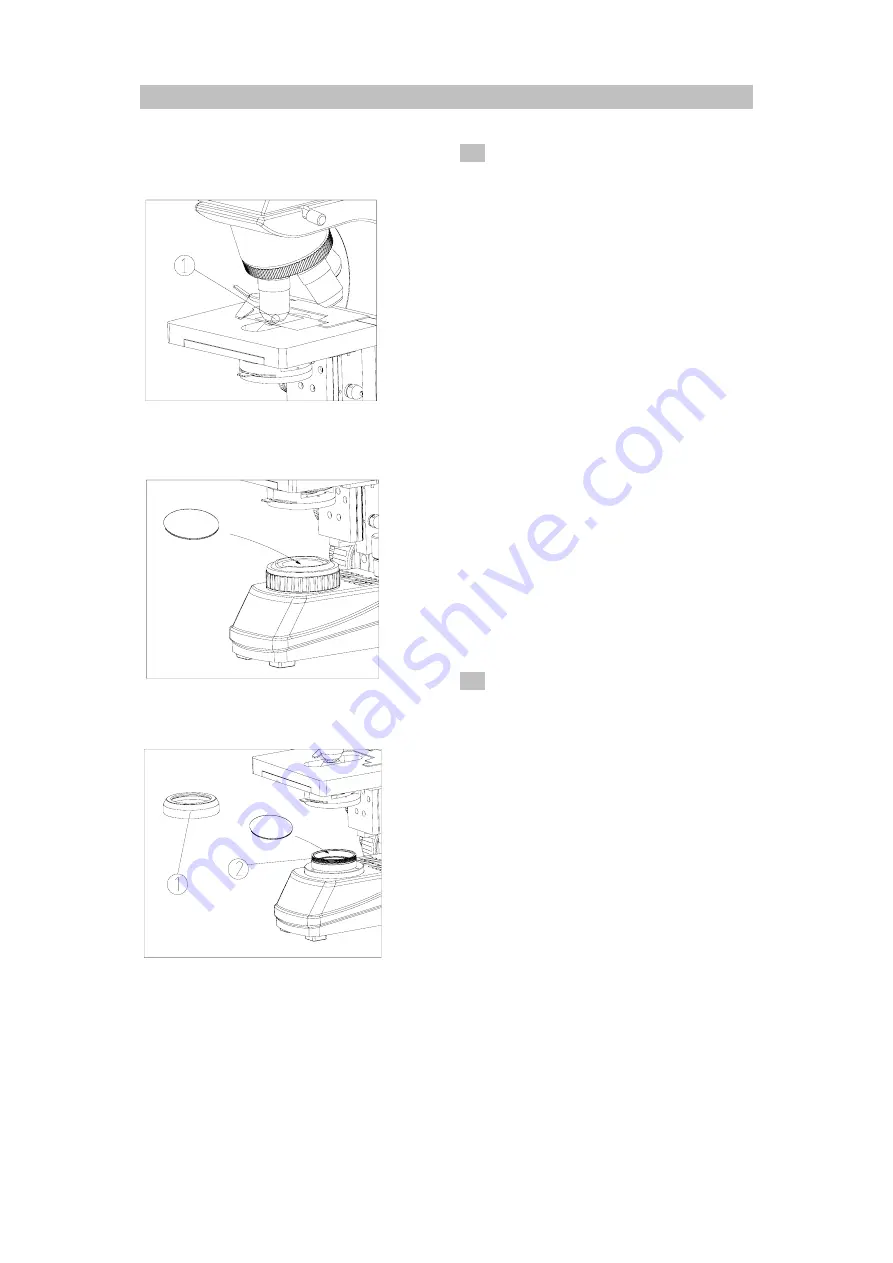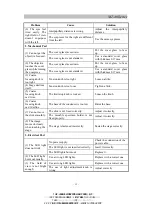
- 9 -
M T - 4 0 Series
3-8
Use the Oil Objective (100X)
1. Use objective 4X to focus the specimen.
2. Place a drop of oil on the specimen
①
(see Fig. 15).
3. Rotate the nosepiece counterclockwise
and rotate the oil objective (100X) to the
light path. Then use the fine focusing knob
to focus.
★
Make sure there is no air bubble in the
oil for fear affect the image..
A. Move the eyepiece to examine the air
bubble. Open the aperture diaphragm and
field diaphragm fully and observe the edge
of the objective from the tube (It seems
round and light).
B. Rotate nosepiece slightly and swing the
oil objective for some times to remove the
air bubble.
4. After using, wipe the front lens with a
tissue moistened with a small amount of 3:7
mixture of alcohol and ether or with
dimethylbenzene. Wipe oil on the specimen.
★
Don’t put another objective to the light
path before the oil is wiped to avoid wetting
the dry objective.
★
Too much dimethylbenzene would
dissolve the lens’s stickiness.
3-9
Use the Filter
Filter can make the background more suitable
and increase the contrast.
Iris diaphragm Koehler
Illuminator Condenser (Optional)
Put the filter into the groove of condenser (see
Fig. 16).
Built-in Koehler Illuminator Condenser
Screw off the condenser cover from
①
condenser base , and put the filer into the
②
groove of condenser base , a
②
nd then screw on
the condenser cover (see Fig. 1
①
7).
★
There are four kinds of filter: blue,
green, yellow and white.
Place the filter’s rough side downward.
★
Fig. 15
Fig. 16
Fig. 17



































